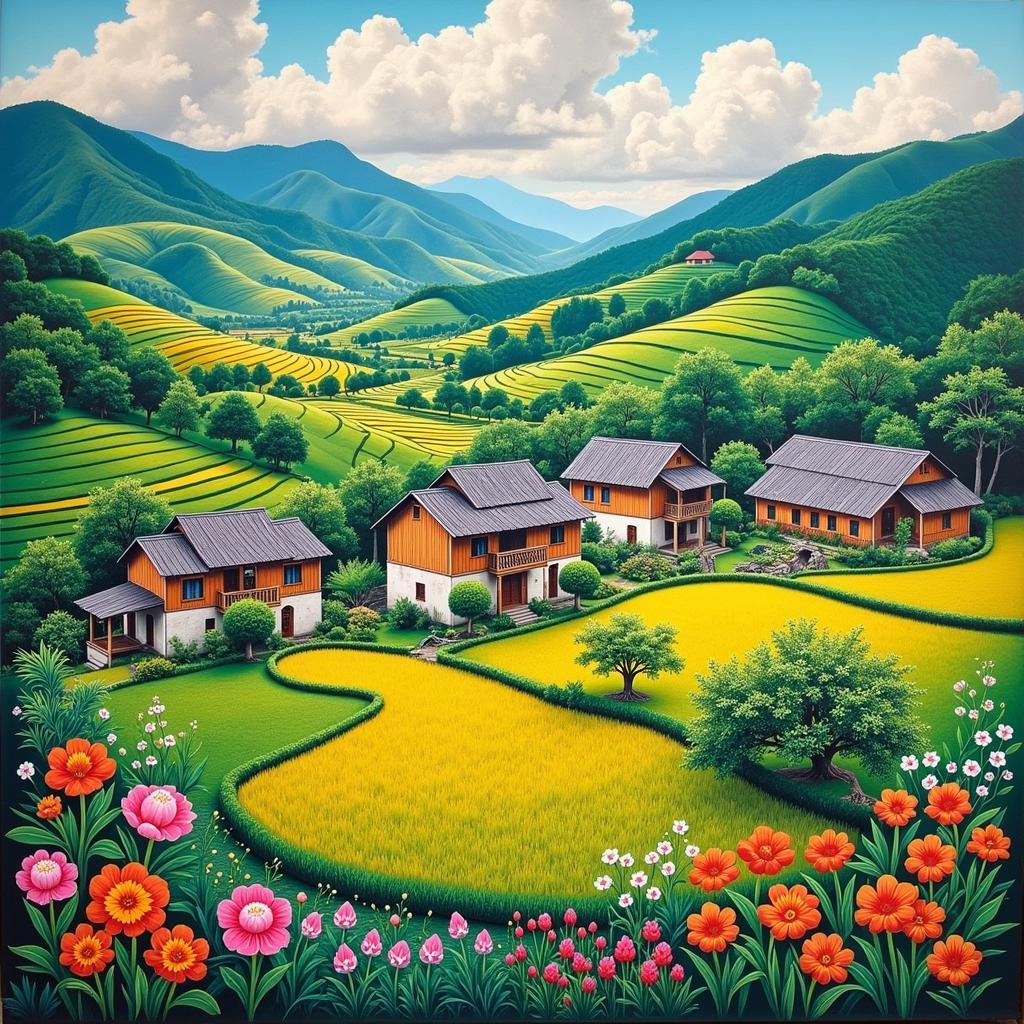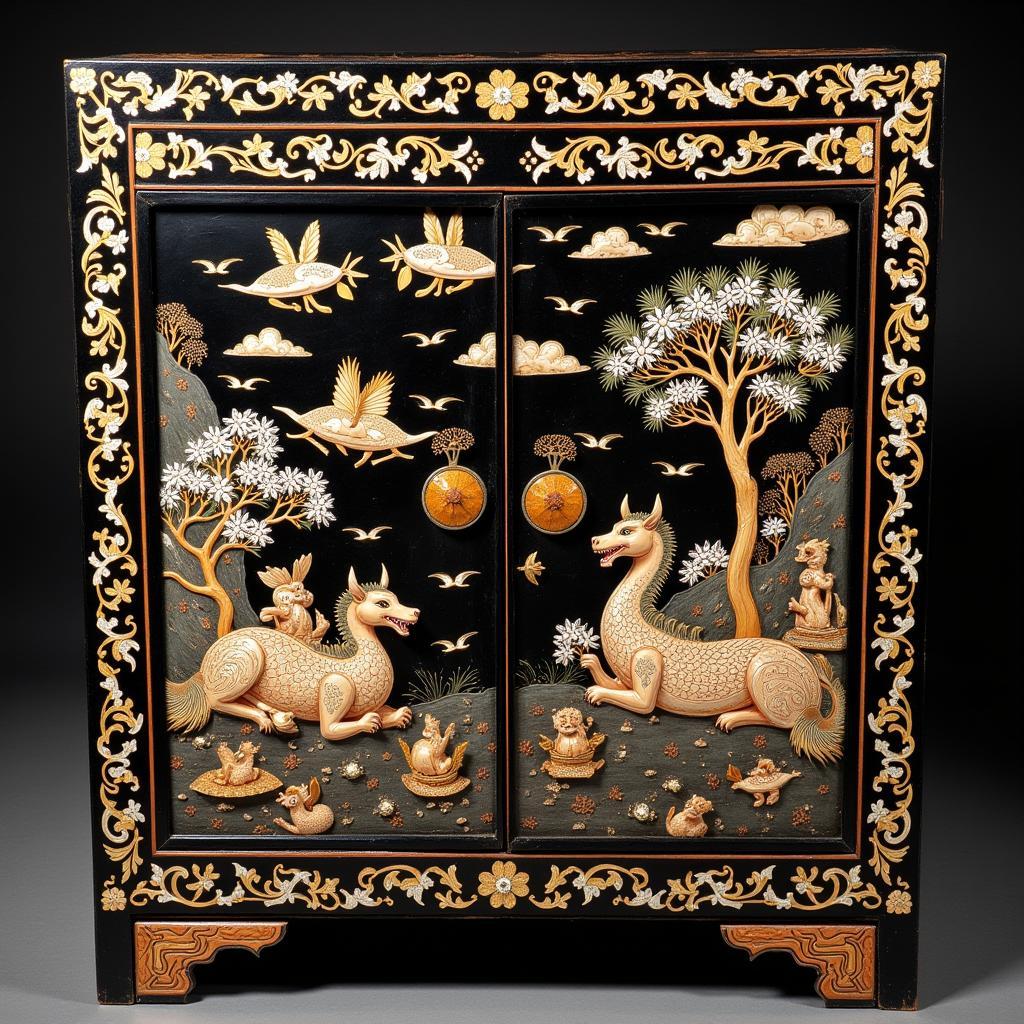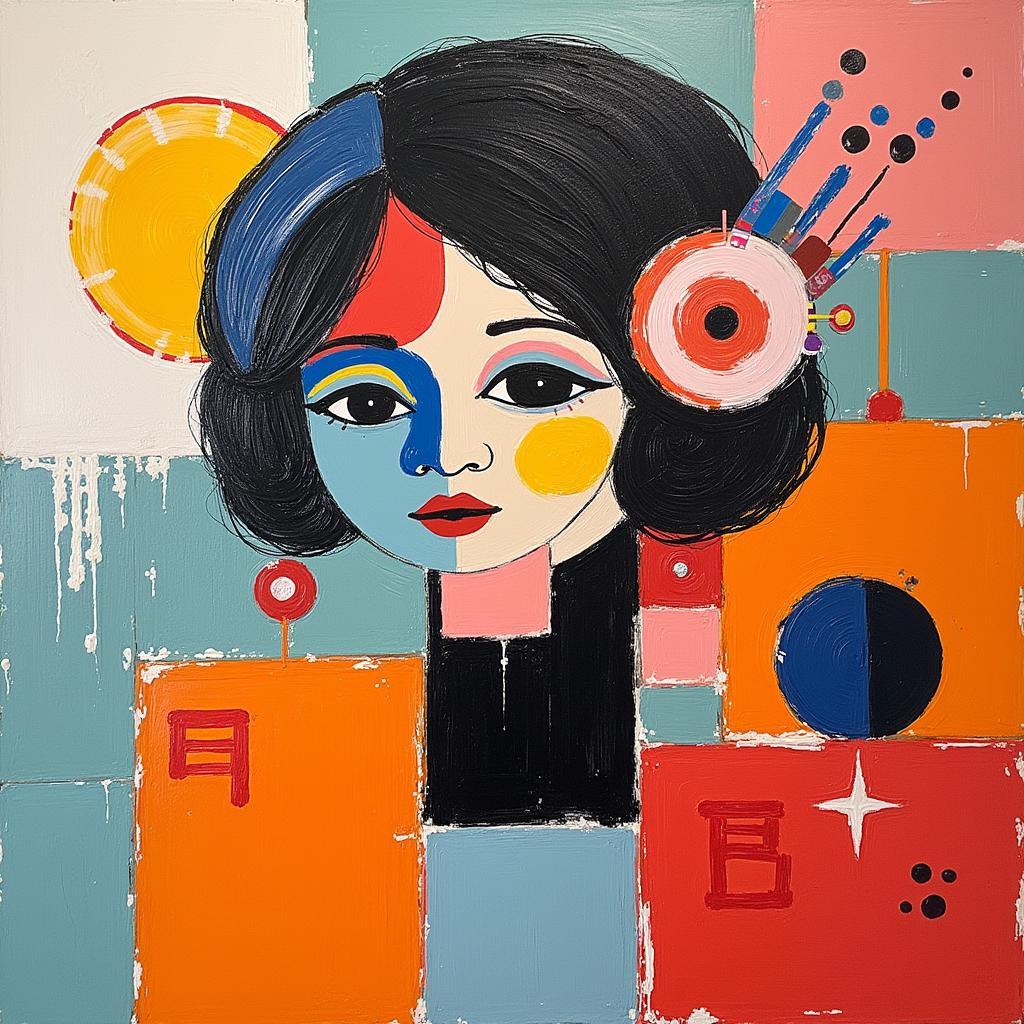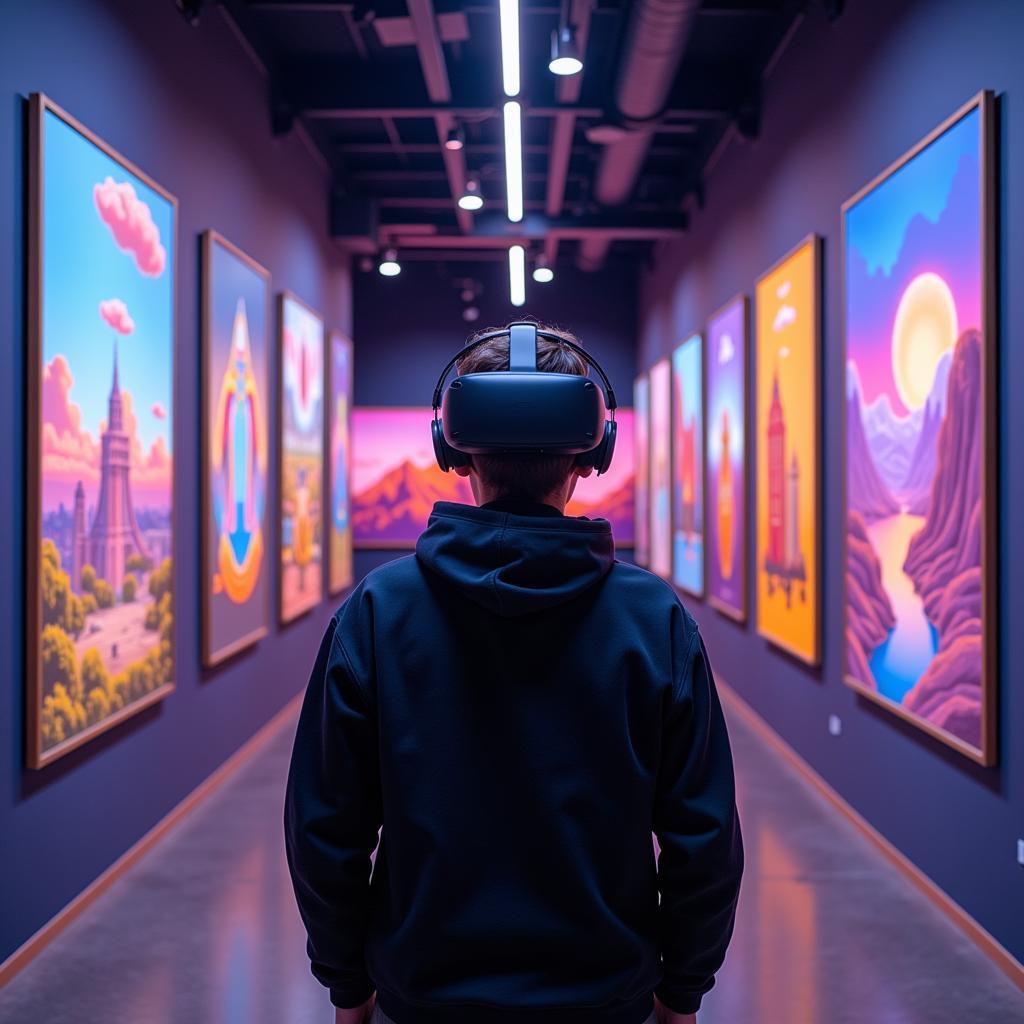Exploring the Vibrant World of Vietnam Art Paintings
Vietnam Art Paintings offer a captivating window into the country’s rich cultural heritage and artistic traditions. From evocative silk paintings depicting rural landscapes to bold lacquerware showcasing intricate designs, Vietnamese art is as diverse as the country itself. This article delves into the unique characteristics, historical significance, and contemporary trends shaping the world of Vietnam art paintings.
 Vietnamese silk painting depicting a rural landscape
Vietnamese silk painting depicting a rural landscape
A Journey Through Time: Historical Influences on Vietnam Art Paintings
Vietnamese art has been influenced by a fascinating blend of indigenous traditions and external forces. Ancient Dong Son bronze drums, dating back to the 6th century BC, offer some of the earliest examples of Vietnamese artistry, showcasing intricate patterns and motifs that continue to inspire contemporary artists.
The arrival of Buddhism from China in the 2nd century AD brought with it a new wave of artistic influence. Buddhist themes, such as lotus flowers, dragons, and celestial beings, became prominent motifs in Vietnamese paintings and sculptures, often rendered in vibrant colors and flowing lines.
 Traditional Vietnamese lacquerware with intricate mother-of-pearl inlay
Traditional Vietnamese lacquerware with intricate mother-of-pearl inlay
During the French colonial period (1887-1954), Vietnamese artists were exposed to European art movements like Impressionism and Cubism. This led to a fascinating fusion of styles, as Vietnamese artists began incorporating Western techniques and perspectives into their work, while still retaining their unique cultural identity.
Distinctive Styles and Mediums: What Makes Vietnam Art Paintings Unique?
The Allure of Silk Paintings
Silk painting holds a revered place in Vietnamese art. Known locally as “tranh lụa,” silk paintings are renowned for their delicate beauty and ethereal quality. Artists use fine silk canvases and water-based colors to create luminous effects and subtle gradations of tone.
The Art of Lacquerware
Lacquerware, known as “sơn mài” in Vietnamese, is another distinctive art form with a long history in Vietnam. Created by applying multiple layers of lacquer, derived from the sap of the lacquer tree, onto a wooden or bamboo base, lacquerware pieces often feature intricate designs, inlaid with materials like mother-of-pearl, eggshells, or gold leaf.
Beyond Silk and Lacquer: Exploring Other Mediums
While silk paintings and lacquerware are among the most recognizable forms of Vietnamese art, contemporary Vietnamese artists are pushing creative boundaries by experimenting with a wide range of mediums, including oil painting, acrylics, mixed media, and digital art.
Where Tradition Meets Modernity: Contemporary Trends in Vietnam Art Paintings
The Vietnamese art scene is dynamic and ever-evolving. Contemporary Vietnamese artists draw inspiration from both their rich cultural heritage and the complexities of modern life.
Some artists explore themes of urbanization, globalization, and social change through their work, while others find inspiration in the country’s natural beauty, vibrant street life, and the resilience of its people.
 Abstract painting by a contemporary Vietnamese artist
Abstract painting by a contemporary Vietnamese artist
Conclusion: The Enduring Appeal of Vietnam Art Paintings
From traditional silk paintings depicting serene landscapes to contemporary artworks exploring the complexities of modern life, Vietnam art paintings offer a captivating glimpse into the country’s soul. By embracing both their rich artistic heritage and the dynamism of the present, Vietnamese artists continue to create art that is both deeply personal and universally resonant. Whether you are an art enthusiast or simply seeking to connect with the beauty of Vietnamese culture, exploring the world of Vietnam art paintings is a journey worth taking.
FAQs about Vietnam Art Paintings
What are the most common themes depicted in Vietnam art paintings?
Vietnamese art often reflects the country’s natural beauty, cultural traditions, and historical events. Common themes include landscapes, rural life, portraits, historical scenes, and religious motifs.
Where can I buy authentic Vietnam art paintings?
Authentic Vietnam art paintings can be purchased from reputable art galleries, antique shops, and art markets in major cities like Hanoi and Ho Chi Minh City.
How can I learn more about Vietnam art and artists?
Numerous resources are available online and in libraries that provide insights into Vietnam art history, prominent artists, and contemporary art movements. You can also visit art museums and galleries that specialize in Vietnamese art.
Are there any famous Vietnamese artists I should know about?
Notable Vietnamese artists include Nguyen Gia Tri, known for his lacquer paintings, To Ngoc Van, renowned for his silk paintings, and Bui Xuan Phai, a prominent figure in Vietnamese abstract art.
What is the significance of colors in Vietnam art paintings?
Colors hold symbolic meaning in Vietnamese culture. For instance, red often represents luck and prosperity, yellow signifies royalty and spirituality, and green symbolizes growth and harmony.
How can I tell if a Vietnam art painting is authentic?
Authenticating art can be complex. Look for reputable sellers, examine the artwork for quality craftsmanship, and consider obtaining a certificate of authenticity.
How can I care for my Vietnam art painting?
Proper care helps preserve your artwork. Avoid direct sunlight, handle the painting with clean hands, and consider framing it with UV-protective glass.
For any assistance, please contact our 24/7 customer support team at Phone Number: 02462573573, Email: danteum@gmail.com or visit us at Savico Megamall, 7-9 Đ. Nguyễn Văn Linh, Gia Thụy, Long Biên, Hà Nội 10000, Việt Nam.
Explore our website for more information on captivating art forms such as abstract art bright, ocean themed art, metal line art, art wall calendars 2024, and wild west art.



